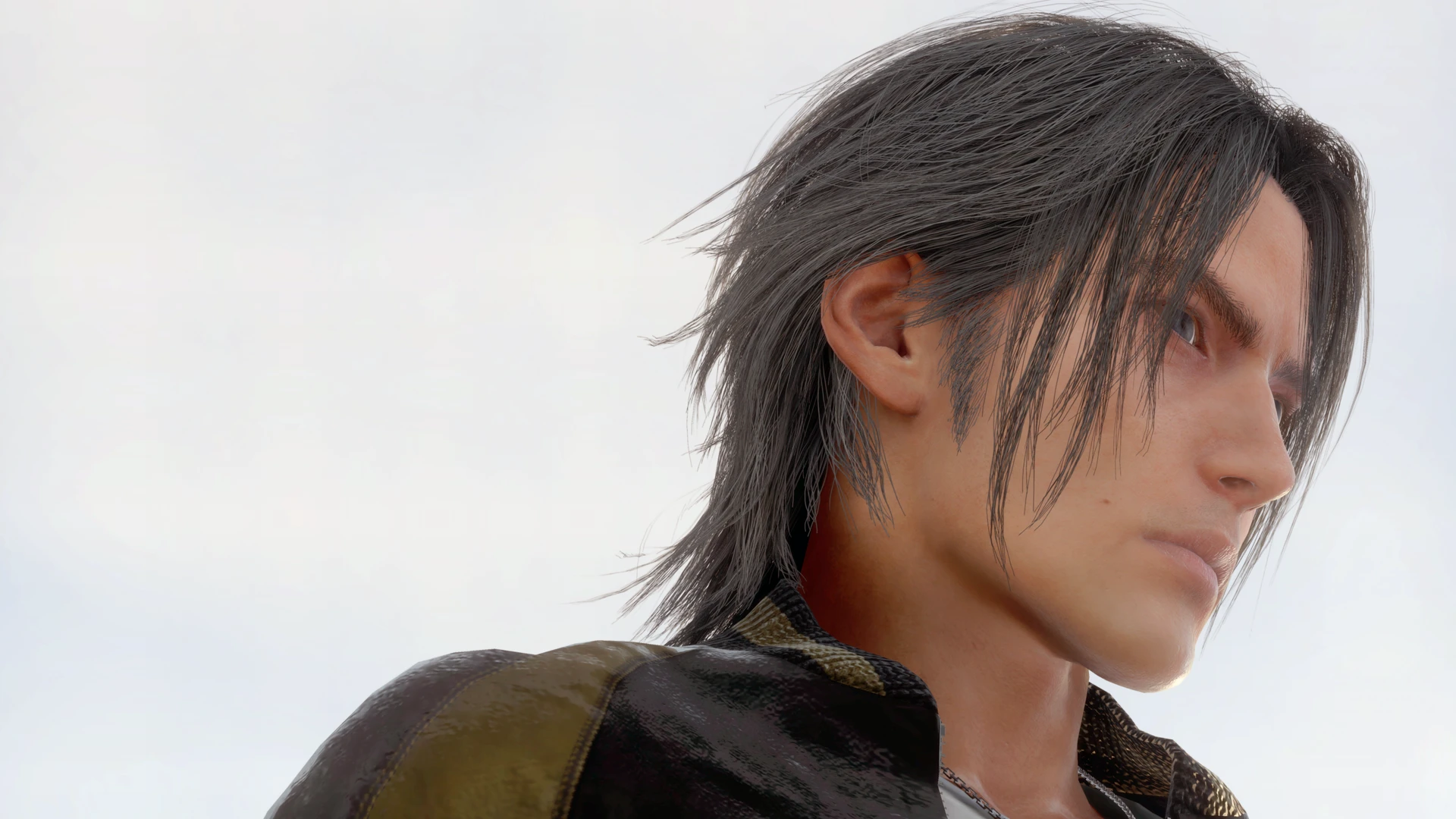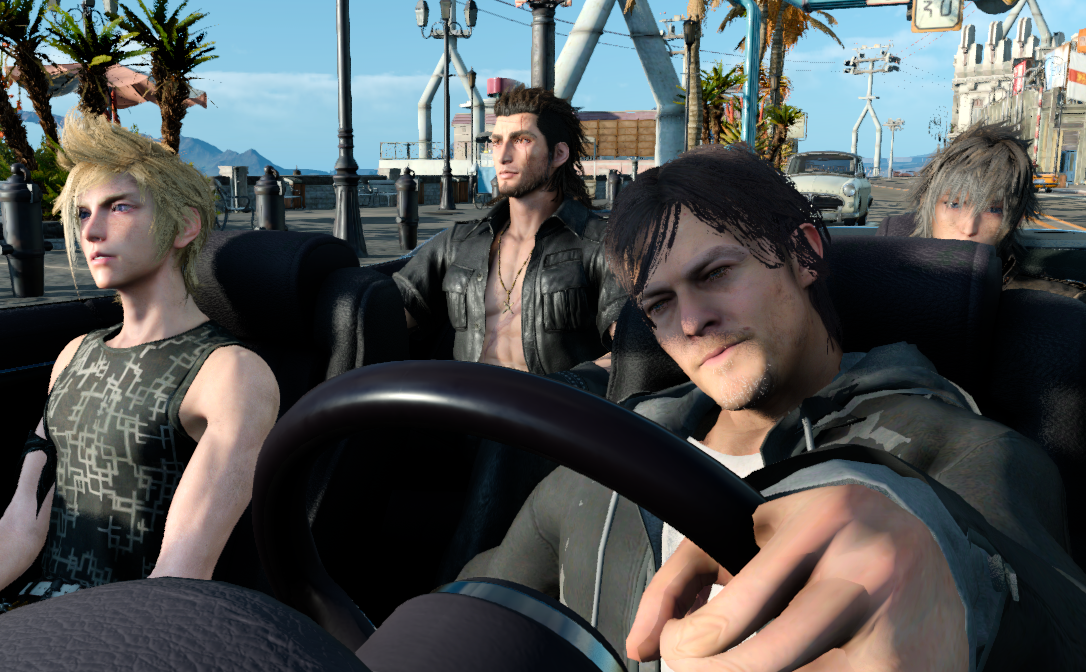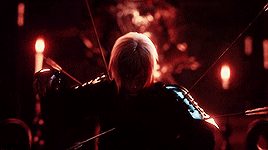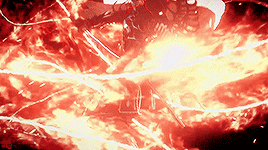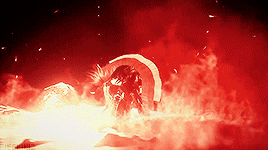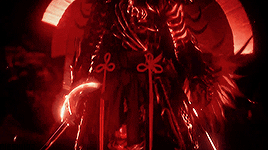GDC 2017 in San Francisco, during a panel that DualShockers attended, Localization Director and Lead Writer Dan Inoue talked about the way Final Fantasy XV was created based on reality, and how localization played into that.
Keep in mind that the talk included spoilers, and those are reproduced in the recap below, so if you have not played the game, you might want to skip this article and come back after you have finished it.
Inoue explains that when the project began, it was built on the “a fantasy based on reality” concept, which is a “significant proposition,” because reality has never been a serious focus for the series.
While all fiction is, to some extent, based on reality, on the surface the intention was to have a real world take touching on fantasy. In time, with the companion projects, an extra dimension was added, and a project “kind of developed a life of its own.”
The film and the anime weren’t thinly-related sin-offs or throwaway side-stories, but “threaded, simultaneous narratives woven together across media.”
Developers could not assume that everyone within the audience has seen all the companion projects, or even any of them, and building integrated, yet independent narratives forming a coherent and cohesive reality represented a challenge.
The fact that Final Fantasy XV was going to be released simultaneously worldwide in twelve languages created a substantial difference with previous titles of the series. There has been no lead time to perform the usual localization tweaks, and that meant that the game had to be “global” from the ground up.
Just as the ecology and nature of the game borrowed from the real world, so did its cultures: the world of Eos features four different civilizations with distinct architecture, lifestyles and written languages.
Altissia was inspired by Venice, so the Italian translation team was called on to help naming the locales and with the signage. The Lucis continent uses English as a base with French and Gaelic influences in the spelling.
Normally localizing art assets is unwise and a headache, so most Fantasy games wisely takes other routes, but one of the luxuries of having a multi-cultural and multi-lingual in-house translation staff is being able to review things early on, so that they could be globalized from the get go, and incorporating those semi-real world languages into the world, helped build the road trip aesthetic, making it “familiarily foreign” for all audiences.
Inoue stressed on the importance of consulting native speakers when working with foreign cultures, especially in settings based on the real world. Otherwise the result is laughably inauthentic, and while stories often cater more to perception than to reality itself, it’s 2017, and the internet will call you out if you do it wrong.
While plenty of local color was added to the continent of Lucis, it wouldn’t fit with the modern metropolis of Insomnia. The crown city is a cultural amalgam, and the art team consciously intended to show street scenes from the world over. You can see bits of London, New York, Paris and Tokyo depending on the angle you look at it from. This is intended again to make it feel both familiar and foreign to a worldwide audience.
In order to give it a linguistic difference, accents were employed, according to social circles more than geographic origin. This game the game a more modern feeling than the classic Scottish used in many fantasy worlds. Ultimately Inoue can’t say definitively if this enhanced or diminished reality for the audience at large, but it gave the team freedom to assemble “a really great transatlantic cast.”
There was also something that some might consider “a little bit too real,” and it was the fair amount of product placement. Some might fight it jarring, with the lines between fantasy and reality becoming very blurry, and “the specter of commercialism looms kinda large over artistic merit.” Inoue admits that those “imports from behind the fourth wall” might be hard to explain in canon, but do make the world more recognizable and familiar, and more real to a good segment of the audience. Or at least, that’s what he tells himself at night.
When it came to including cup noodles into the game, it was done kind of tongue in cheek, because the team wanted to respect the intelligence of the audience, making it “a playful tap on the fourth wall.” Inoue hopes that players enjoyed it.
Moving on to characters, Inoue explained that relatable characters can make or break your reality, and identified with spectacularly clothed JRPG heroes can be a barrier of entry for a lot of players, and the fantasy-like names don’t always help either. Yet the team tried to make foreign tropes more relatable for most people.
Ignis is the brains of the operation, “a sort of James Bond in the great outdoors,” Prompto is a funny fast-talker, kind like Ferris Bueller, and Gladio is a younger John McClane, and who wouldn’t want to take a road trip with James Bond, Ferris Bueller and John McClane?
While writing with established reference character voices in mind isn’t exactly a cutting-edge technique, according to Inoue it’s especially critical in localization. You tinker with the archetype, but it provides a compass that keeps your character directed for your audience through all the cultural clutter.
Incidentally, these analogues aren’t sidekicks. Each one has its own sense of cool, each can carry his own story, and each is the normal one in his own mind. This keeps the give-and-take fresh, because each of them feels that he’s right.
Inoue normally uses fictional characters as references and not real people, and Noctis was not to be the usual “whiny emo JRPG character.” While talking to the Japanese voice actor, Inoue learned that his inspiration was Kurt Cobain, sweet at heart, but always on edge, and this really clicked. This is why Noctis became Inoue’s one exception to his rule.
Talking to the Japanese voice cast is a great source of ideas. Failing that, the English voice cast can give a lot of input into the characters as well.
Adding independent side stories and flashbacks added persistence to the universe and characters. Each story has its own self-contained arc, but when you put them together, they form life arcs for the characters. On top of that, they also add psychological depth.
If you look at the game alone, Noctis starts off as a disenchanted youth who embarks on a journey to overcome self-doubt. On the other hand, when you see him as a kid, he’s actually a really happy kid. We see the events that cause him to become a disenchanted youth later, but taking his childhood story and the story you see in game, we find a story of recovering loss of innocence, which is “kind of beautiful” according to Inoue.
Similarly, with Prompto, we can see stories of insecurities and brotherhood, and that gets reprised in a conversation in game. This represents the independent yet integrated of the project. Both stories stand on their own, but they give you a deeper appreciation when they connect.
Final Fantasy XV is a road trip in which you spend a lot of time hanging out with your friends, and that feelings needed to be immersive, so developers devoted a lot of their energy to creating the conversational chemistry: making the friendship feel real was the heart of the player experience, and below you can see the formulas that were applied.
The matrix above was created very early, defining the inter-personal dynamics, equipping everyone with his fair share of nicknames and idiosyncrasies like “generally avoids contractions” or “never says he’s sorry” and that sort of things.
Establishing these rules was invaluable since there were multiple writers working on the project across different forms of media.
Linguistics were also used, and to convey the way they were comfortable and casuals around each others, the team tended to drop subjects whenever possible, also leaning on voice actors for organic nonverbals, like little mumbles, clicks and squeaks that can be tricky to script.
On top of adding life to the character, these tricks also helped matching the line timing of the Japanese script.
A last technique is something Inoue calls “Sorkinization,” in which each line picks on or ties into the words of the line before. You borrow a word to start the line, or spit it back with a little twist, or mimic the delivery.
Picking on recently heard words is something natural to language. Everyone does it unconsciously, and done in moderation it can add a natural feel to the dialogue. Of course, it cannot be overdone.
Talking about the plans for lore, Inoue mentioned that Final Fantasy developed an “unfortunate reputation” for delving into the esoteric with its cosmology, so the team wanted to keep the lore rich, but needed to make it accessible.
They focused on the layman’s understanding of lore, and used words that could be easily digested, like Gods, Demons, Messengers, Oracles and things that the average person on the street has heard. Summoned characters, which every Final Fantasy names differently were called Astrals. This allowed the team to make sure that everybody could be clear on the basic ground rules of the lore.
Then to prevent the lore from becoming too flat, kennings were added for effect. For instance Titan is the God of Earth, and that how most refer to him, but at times you hear him called the “Archaeon” or “Land Forger” for a more eloquent style depending on context and who is talking.
On top of that, a surreal feel was also added, for instance with Gentiana, who is an avatar of the Goddess Shiva. To keep her shrouded in mystery, she was given dialogue in which she never used “you” or “I,” creating an otherworldly, detached feeling. This worked very well with her, so it was expanded to all the gods, to make them feel detached from humanity.
This worked really well in monologues, but made writing dialogue really, really difficult. It took a lot of polishing to get it right, but yet it was fun to do.
Interpretive language was also used to convey an eerie feeling in god scenes and dream sequences, also giving more weight to the words. For instance, the Japanese might literally state that “the Astral Gods have granted you their power,” but in English it was rendered as “the stars shine for you now.” According to Inoue, this accomplishes the goal of the point, and allows for deeper interpretations while adding depth to the game’s cosmology.
That said, Inoue explained that a lot of those tried-and-true tactics backfired as the project progressed.
The part about character chemistry worked fine for cutscenes and setpieces, but “some of the pieces weren’t so set.” After completing recording for the Episode Duscae demo, the team observed something interesting: part of the developers’ plans to maximize voice assets led them to concatenate the lines. The same voice lines could appear in many different conversations, with different lines preceding or following.
After all the effort put into making the characters feel as human as possible, conversations started to feel like robot calls. Making an interchangeable dialogue system work in text is hard enough, but vocally it was even worse.
To solve the problem, a few ground rules were worked out with the AI team. The first was to separate the lines that would start a conversation for tonal difference. Then the lines were mapped out linguistically, as Japanese does not use plurals and treats subjects differently. Ultimately, it turned out well and organic, better than Inoue himself expected.
Some continuity issues also arose between game, film and anime. While the team managed to reconcile those details, there were larger continuity issues that grew as the universe was expanded, like how do you fit together “dudes around a campfire, pent confrontation with royalty, an illustrated boy petting a dog and a transforming flying car.” How do these people talk to each other? It simply was not practical to have one overarching style that applies to everything.
If that was not possible, at least the team could have “contiguity,” which is to say maintaining suspension of belief at the seams where the technological met the arcane or high fantasy met casual banter. One of these was in the very first scene of the game, with Regis, a character with a high fantasy tone established in the film, is sending off Noctis, who is like Kurt Cobain.
The key to connect the speech was building off the emotional father and son dynamic, and let the emotional content supersede the stylistic. This applied to other characters, “keeping them in the same scene, and indirectly in the same world.”
On top of that, for authenticity reasons actual kids were cast for child roles, and they turned out “amazing performances,” but as production schedule lagged on, the team got a little nervous, since in-game kids are kids forever, but voice actors grow up.
Inoue then moved on to talk about promotion. Writing any kind of fiction, one needs to ask himself the critical questions: “So what?” “Who Cares?” and “Why does any of this matters?” More and more, audiences attempt to answer these questions by overanalyzing trailers.
At the beginning, promotion mostly originated from Japan, with English content plugged into Japanese trailers. When doing a localization, the team tends to rethink things from the ground up, but that has always been done on the assumption that information would be delivered when the player starts playing the game.
While character naming and accenting decision were being made with a larger background exposition in mind, the audience wasn’t seeing that, and the global promotion and English exposition were out of sync. The team needed to prevent misunderstandings from “melting down the internet.”
Communicating with regional marketing teams and knowing their promotional schedules and messaging allowed the team to better contextualize the content for the audience, and tell a more cohesive story. They also helped covering up for the localization team, like for the demo when there was the term “Archaeon,” but no “Astral” yet, and people thought that “Archaeon” was the name of summons. Inoue admits that it’s a “minor detail,” but it’s a “huge deal.”
On the other hand, a problem of being so involved with the promotion is that you risk to lose sight of players who come in blind, without having watched trailers or followed the promotion of the game. How do you bring them up to speed without alienating your avid fans?
There is no easy answer for that question, and Inoue isn’t sure that a solution has been found. There are so many permutations of the story and storytelling, and having an open world format only adds to the chaos.
The tale of the game needs to stand on its own legs, and you write mostly for the uninitiated audience. Yet, you also don’t want to spoon-feed people with things they already know. One of the key elements was to be “nonchalant” about surprises, so the people who saw them coming wouldn’t feel taken aback. The team also made sure to name-drop in dialogue more than they normally would, and that key points from other media would at least available on interactive objects.
They actually employed some rather “heavy handed” measures like announcing character names on-screen, and the montage from the film. On top of that, they had to be mindful of not overselling their reveals, as you don’t want to rub in the feeling that the player knows something that the character doesn’t.
One of the earliest trailers back in 2014 showcased the invasion of Insomnia, pretty much giving away the ending of the film, yet somehow it didn’t spoil the story. A trailer at Tokyo Game Show two months before the show unveiled the main villain, that the player character realizes only halfway through the game, but this also didn’t ruin things like Inoue feared it might, and he thinks this owes to the story’s reliance on suspense over surprise.
Inoue brought up the Alfred Hitchcock’s parable of the bomb in the restaurant. If the bomb goes off without warning, you surprise the audience for ten seconds, whereas you let the audience know that there is a bomb under the table, and that it’ll go out at 3:00, while you have a clock that says 2:45, you get fifteen minutes of suspense. That’s why spoilers really only spoil stories when the story intentionally hides things, or misleads the audience to hit them with a twist.
According to Inoue, in the age of internet-crowdsourced theories where every outcome can be anticipated by someone, leaning on big twists has become less and less tenable, unless you can completely fence your game experience off. Naturally, you need some surprises, but if you’re relying on the big twists in 2017, it’s not a good idea.



